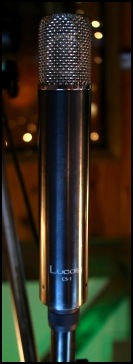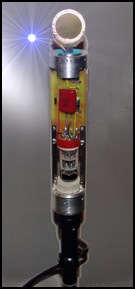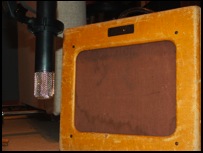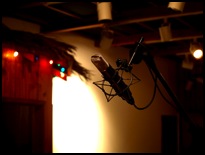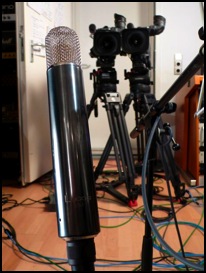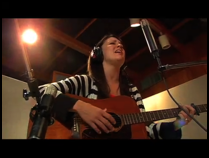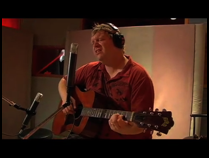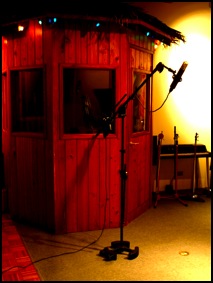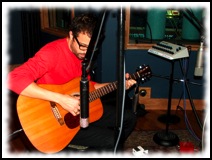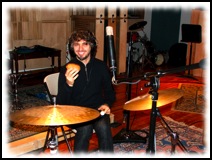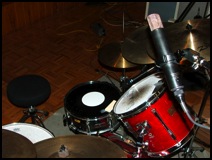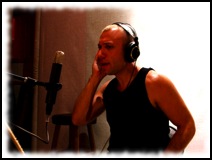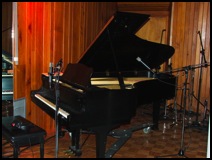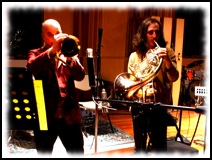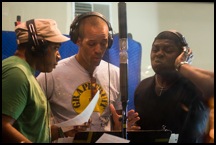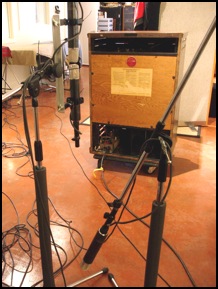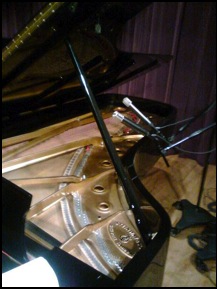The Next Generation of Quintessential Microphones
The Lucas CS-1 Microphone!
The CS-1 is a large diaphragm condenser tube microphone, with multiple pattern selectivity.
The CS-1 is the brainchild of Oliver Archut and Terry Manning.
THE BEGINNINGS
Terry had been talking to Oliver for a number of years about microphone technology, and they started collaborating on such projects as upgrading certain microphones with Oliver's transformers, electronics upgrades, and the like...in particular such microphones as the Gefell UM92S, or the AKG C12VR.
It was apparent to both that there were elements of these, and other modern microphones, that were quite acceptable, when relating those to the venerable classics of our age (U47, M49, ELA-M251, C12, etc.)...but that there were also elements of most modern microphones that "did not quite get there." Hence the need for the upgrades. (Neither recalls ever wanting to upgrade one of those classics though...)
At one point, Terry sent an AKG C12VR, in his opinion the most heinous of the "modern would-be" mics, to Oliver for a complete makeover. Coincidentally, Jeff Roberts was doing the same exact thing with two of his VR's! These microphones came back to their respective owners as entirely new beasts...in fact, Terry's "Previous VR," now modified completely by Oliver, was quickly thrust into the ranks as one of his best vocal microphones...easily up there with his 48's, 49's, C12s, etc. Jeff reported equally stunning results. What Oliver had done was not "just tweak a few things"...he had done a complete redesign, including entirely new electronics and custom wound transformers. So that meant the "new" microphones were really just using the existing capsules and/or bodies.
Terry started thinking (a dangerous thing), and soon discovered that Oliver was also thinking along similar lines:
"Why can't great microphones be made today...mics that will rival the classic ones, and also be solid and reliable for many years, not constantly "hoping that old components don't fail?" And why not for less than $10,000?
Well, the answer is that they can be...but very few people in today's world seem actually able to do so.
Oliver and Terry talked and plotted, planned and schemed, and then decided to do something about this...but in a way that would serve the recording industry in a positive sense, and not only in a commercial sense.
THE DECISION
The first decision to be made was, "What microphone did they want to make?" Terry suspected it should be in many ways based on the ones Oliver had "remade" for him and Jeff, but Oliver knew that there was much further that this could be taken...
They wondered, should they just improve upon an existing design, like the C12, or "Follow the Old Technology To a T" with blind care to historically correct circuitry (in other words, a "Clone")? Or should they use all resources, knowledge and technology at hand, resurrecting the Secrets of The Ancients, to make the very best microphone that they could, no matter what?
In the VR Mods, with Oliver having already changed the biasing and remote setup to more of an M49 style, so it made even more sense to open up the door further, to improve and fine tune the circuit to the very best of their abilities.
It was decided then...they would follow no classic microphone's plan exactly, no matter the historical import of any one microphone...if appropriate, they might borrow certain concepts from one, or more...but they especially would INNOVATE as well.
WHY?
Many at this point might be saying, "Those old mics are so good, why do anything else? Why not just make a perfect clone?"
Oliver and Terry's answer was: "We are not Cloners, and we have not made, and will not make, a clone. It's that simple. The Greatness of Man lies in Innovation and Experimentation, not in Blindly Following."
Remember, when the 47/48/49/251/12 were originally designed, the makers WERE innovating. The designers did not just rely on remaking a 44, or some early condenser of the day. The Neumann/Nord West Deutscher Rundfunk /Telefunken/AKG designers used everything at their disposal, and created new and better ways, to MAKE THEIR OWN SPECIAL PRODUCT, as well as they could do it.
And they did that, with the then-world's greatest designers, right up until...the transistor came in the door. After that, there were certainly some excellent fet microphones made...but the original tube expert designers were on the way out of corporate favour. Then when, a bit later, the transformer was going out of vogue in favour of the electronically balanced circuit, things were on even more of a downhill slide for our Great Designer Guys.
BUT these gentlemen didn't just die, didn't just forget what they knew, didn't just give up their life's work. Had they been allowed to, and funded, they would have just kept on innovating, discovering, designing perhaps even better and better tube and transformer microphones, mics made to the Design Purpose of "Be the Best That You Can Be." They just weren't allowed to do so within the large companies.
HOW?
Likewise, the corporations started throwing out their large purpose-built manufacturing equipment for the making of the tubes, transformers and certain other components.
Many probably know the story of how Oliver, as an AEG-Daimler-Benz (formerly Telefunken) employee, came to acquire the very manufacturing equipment that actually made many of the classics we know and love. And of course, as one of the "then-new-guys" at the old Telefunken company, he was privileged to meet, and learn from, the greatest designers.
So, to make a long story even longer, that brings us back to today...and the making of the CS-1. Oliver has been able to consult directly with the two last living "Greatest of the Great" designers, both of whom have helped Lucas to come up with the next generation of great tube microphone designs. One of these lovely gentlemen prefers not to be named publicly at this time...but he is now ninety-five years old, and still thinking strong and going strong. This august German was a major member of the Design Team of the M49/M50 microphone, and of the K47/49 capsule!
The other gentleman, the Last Living Telefunken Audio Tube Engineer, is Dipl. Ing. R. Wohlleb, and he was a driving force on (amongst many other great projects) the AC-701 tube Design Team!
Oliver had many innovative ideas about how this microphone might be made, and with collaborative input from these great NWDR/Telefunken designers, has come up with a truly amazing circuit.
THE QUESTIONS
The next big question: Should Lucas invest many, many thousands of Dollars searching the world for the remaining leftover 6072a tubes, or should they to find a suitable alternative, hopefully even better, that is available in quantity? They didn't want a tube that was becoming increasingly hard to find, was more and more expensive, and is in fact often unsuitable for microphone use once it is bought. They needed to find a tube that is in the same ranks as the 6072 or the AC701, but that will be guaranteed to be available for quite some time, and is relatively inexpensive...there was no desire to get into a VF14-type situation any time soon!
Fortunately, with the help of his accomplice, "The Last Living Telefunken Tube Engineer," Oliver found the perfect tube in the needed quantity, a tube that offered, in addition to very low microphonics, a couple of design possibilities that had never before been used in a microphone buffer amplifier.
As Oliver says, "To be precise, why not using both sides of the the dual triode to cut impedance in half, what means a lower ratio transformer, and most of all only 1/4 of the noise that a single side would generate. The answer is quite simple, less turn ratio of the x-former that translates in a better resonance tuning of the circuit, less noise, and foremost a higher headroom for the buffer amp. With the selected circuit, any 6072a/12AY7 tube can be utilized in the microphone, but certainly is no match to our CS-1 stock tube."
The valve (tube) is known as the Lucas LMG-95-ES, and was manufactured by Mullard in the famous Blackburn, England facility in the early 1970's. You will never have heard of this tube before. It was originally made for a prospective high end audio project, but the project did not come to fruition. So for years, thousands of these NOS tubes have sat in a secluded warehouse, apparently just waiting for the CS-1. Several things are happening within this tube and circuit that Lucas prefer to keep proprietary for now, but suffice to say that it is one of the best sounding, and quietest tubes that either Oliver or Terry have ever heard. And Lucas will absolutely guarantee that they keep a lifetime supply of these tubes available for a very reasonable price to registered owners. Tube life is estimated at between 20,000 and 50,000 hours.
The next big question was, what would be the capsule? They immediately knew where they wanted to go. There is little doubt that some of the best capsules today are being made in Germany by MBHO GmbH Mikrofonbau Haun. So Oliver was privileged to call upon the help of their good friend David Bock, co-founder and chief designer of Soundelux (now Bock Audio), who hooked them up to use his most special, custom MBHO capsule, designed by Herbert Haun's chief engineer Manfred Schneider, who was previously for years one of the top engineers at Schoeps. This capsule owes an historical nod to the brass CK-12, but is in a league of its own. It's a pretty expensive piece, but well worth it when you want to build the best possible instrument.
The last big question was, "What should the microphone look like?" They didn't want anything crazy, space-agey, or all that different, they just wanted something simple, straightforward, and most of all, functional…and great sounding. Because Terry always loved the classic streamlined look of the C-12, they started there. The CS-1 is slightly larger (wider) than the 12, but it looks quite a bit the same...classic, and simple. But don't let the simplicity or familiarity of the look fool you...inside is an innovative beast.
And to make this body, they also wanted some very special materials . So they called upon their great friend, microphone enthusiast, and coincidentally, metals expert, Jeff Roberts, owner of Latch Lake Products. After much experimentation, Jeff came up with something they all loved...a solid steel body, made with a proprietary (and trademarked) finish known as 'Lucazite™.’ The body is incredibly beautiful, and also provides the best rejection to RF ever seen. An added bonus is that it is virtually scratchproof and dentproof...very solid, long-lasting, and sturdy. The body is a beautiful charcoal matte colour, something lovely to behold. The colour-coordinated swivel mount is likewise great looking...there will be no "spider shock mount" made by Lucas (but there are several aftermarket ones that can be used if one determines it is needed). By the way, the microphone components (unlike in the C12) are extraordinarily well shock mounted internally, much as in the M49. In fact, during early testing, Terry had not secured the microphone well enough, and it fell hard to the wood floor from about four feet. There was no damage, and the microphone worked just fine. An unintentional real-world "Drop Test!"
The external Power Supply supplies power to the CS-1 (of course) , provides the audio output via XLR connector, and has the facility to choose remotely any of eleven pattern positions, from full omni to cardiod through to figure of eight. In addition, the PSU is designed with a "Fail Safe" circuit, so that if the cable is pulled out whilst the microphone is turned on, the supply will revert to "Stand By" mode, and no damage to the tube or electronics will result.
ACQUISITION
So, that's basically it. Not a Clone. Calling upon some aspects of classics such as the 47, 49, C12. But also completely original. We at Lucas Engineering are biased, certainly, but must also add that we are all captivated by the sound of this microphone.
In total honesty, we are in this to make a great and historical instrument, something that will one day be cloned itself, and to prove that it can be done today...of course we have to all make a living, but our primary goal is the quality microphone, not just making buckets of cash.
We will have no distributors, no middlemen, no advertising.
We will only guarantee now that we will make 300 of these microphones. We do not want to jeopardize the availability of tubes for tis microphone.
Any spots that become available for 3rd 100 Lucas CS-1s will be available at a cost of $3,975 US.
To get one's name on one of our order lists, you must send a 50% deposit in advance. When your microphone is nearing completion, you will be notified to pay the remaining balance, plus shipping. The microphones will be delivered in sequential order, from the list.
Email your order to:
lucasmicrophone@gmail.com
NB: All 300 slots on our three series are already taken, however...
A Waiting List has been started for anyone with further interest. If anyone does vacate their position on the Third 100 List, people might be able to move from the Waiting List to an open spot...of course, this is strictly speculation, but we do expect a few forced defections somewhere, sometime.
Any serial numbers are available as a sonically matched pair, and microphones from the Second 100 will also sonically match those from the First 100.
CS-1 FACTS:
*First Artist to sing on CS-1 Prototype: Blake Morgan
*First Artist to sing on CS-1 Production model: Norah Jones
*First Lead Vocal sung in entirety: Emmy Rossum
*First Electric Guitar amplifier to be recorded with the CS-1: 1947 Fender Deluxe “TV Model”
*First CS-1 to be ordered and delivered: SN 001 (part of their Decca Tree inc/002-003) to The Audities Foundation, Museum and Studio dedicated to preserving electronic instruments and recording gear.
*Many more facts to come, and much recording history to be made...
DISCLOSURE OF PARTS MANUFACTURE
Electronics: USA
Capsule: Germany
Tube: Great Britain
Body: USA
Swivel Mount: USA
PSU: USA
So we can proudly say,
"Handmade in Gaylord, Kansas, USA"
